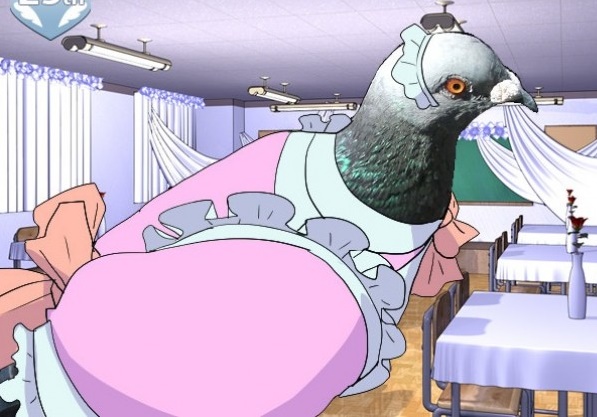

Screenshot of the messaging component of Mystic Messenger Dating sims would become a popular subcategory of visual novels, and for good reason-the branching narrative format of VNs easily lends itself to the multiple routes required for a dating sim.
#HATOFUL BOYFRIEND VNDB SERIES#
Several sequels for the series were also created in the following years. It was also around this time that the first otome game (a genre of simulation games targeted towards women) was released: Angelique (1994) was a dating sim created by Ruby Party, an all-woman division of Koei. Several other VNs in the future would take their lead from these games and feature similar mechanics. Yu-No (1997) included an ADMS (Automatic Diverge Mapping System), a map of the decision points in the branching narrative. EVE Burst Error (1995) allowed the player to switch between two protagonists throughout the game such that the characters could interact and work together. Meanwhile, other VNs released in the ‘90s introduced new approaches to the genre’s style of branching narratives. Kojima continued to produce several more notable VNs throughout the next decade. Lolita was essentially a game of strip rock-paper-scissors, in which the girl pictured onscreen would remove an item of her clothing each time the player won a round. In fact, the first visual novel (of those documented by VNDB) was a game called Lolita: Yakyūken, developed by PSK and released on the FM-7 in 1982. Though there are now many diverse VNs on the market, there is no doubt that the genre has its roots in eroge (erotic games), particularly bishōjo games, in which the assumed straight male player can have romantic and/or sexual encounters with various female characters. To look more deeply into what makes VNs tick, we can review the history of the genre, starting with some of the first VNs released in Japan. There’s something about the experience of playing VNs that can’t be replicated, and it’s not just the long hours spent skipping through paragraphs of text.
#HATOFUL BOYFRIEND VNDB TV#
Although countless VNs, especially those made in Japan, have been brought back as animated films or TV series, there is often a sense of loss in those adaptations. Still, there’s a reason there are so many devoted fans of VNs throughout the world flawed or not, they deliver valuable stories, many of which could not suitably be told through any other medium. People typically don’t play games to read paragraphs upon paragraphs of description, so in some ways, it’s not surprising that VNs aren’t more popular. It can take a substantially longer time for the story to advance, whereas with mainstream games, there are constant tasks or action-packed scenes to keep players engaged. VNs are much more static than other games, tending to describe, rather than show, action. It is understandable that players, especially those new to the genre, would be turned off purely by the amount of time they need to invest in a story that they may or may not enjoy. Even the most widely acclaimed VNs sometimes have long expositions and repetitive content that the player must trudge through in order to get to the meat of the story. In any case, it can’t be denied that VNs ask a lot from their readers. Those who prefer novels may rather read a book without having to stop to physically interact with the story, and those who prefer video games may rather play something more fast-paced that requires less reading. A possible reason for this is that VNs straddle two unlike mediums-video games and novels-in a way that does not always appeal to fans of either. Unlike mainstream types of video games such as RPGs or FPSs, VNs are considered a rather niche genre. Many are dating sims, in which players try to win over characters by choosing certain dialogue or action options, and many others are puzzle-based mystery games (referred to as “adventure games” in Japan) in which players must complete minigames in order to progress the story. Many popular VNs originate from Japan and have been translated into other languages following their release.
#HATOFUL BOYFRIEND VNDB SIMULATOR#
You might picture a dating simulator featuring anime-style art and tropes, or a murder mystery featuring interactive puzzles.Īlthough these are overgeneralisations, they are understandable ones. However, there are some similarities that can be seen across much of the most popular VNs such that it is not too difficult to visualise a stereotypical VN. At their core, visual novels (VNs) are simply text-based stories told in a digital medium, often accompanied by relevant visuals and/or audio. Regardless of whether you’ve played a visual novel, chances are that you have some notion (preconceived or otherwise) of the genre and its audience. Bigger on the Inside: A History of Visual Novels


 0 kommentar(er)
0 kommentar(er)
